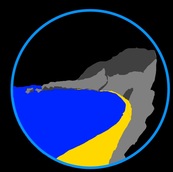Goosefish
Lophius sp.
Where is it found?
Marine
Diet and foraging method
Key adaptations
They have broad, flattened and spiny heads and a large mouth with pointed teeth to engulf their prey. Goosefishes are well camouflaged lying flat on the sea floor, not only due to their sandy colour but also the fringe of skin flaps around their body to blend in. This protects them from predators but also assists them in ambushing their prey which are attracted to the bait they swing from a long back spine.
Social organisation and mating system
N/A
Did you know that...?
It has been known since ancient times as the 'Fishing frog' , due to its bizarre foraging method which involves swinging a flap of its skin as bait on the end of a back spine to lure in prey.
Taxonomy
Picture credits:
Maps from: http://species.mol.org/species/
"Reticulated goosefish (Lophiodes reticulatus)" by NOAA's Fisheries Collection; Collection of Brandi Noble - http://www.photolib.noaa.gov/htmls/fish4311.htm or NOAA Photo Library: fish4311. Licensed under Public Domain via Wikimedia Commons - https://commons.wikimedia.org/wiki/File:Reticulated_goosefish_(Lophiodes_reticulatus).jpg#/media/File:Reticulated_goosefish_(Lophiodes_reticulatus).jpg
"Reticulated goosefish (Lophiodes reticulatus)" by NOAA's Fisheries Collection; Collection of Brandi Noble - http://www.photolib.noaa.gov/htmls/fish4311.htm or NOAA Photo Library: fish4311. Licensed under Public Domain via Wikimedia Commons - https://commons.wikimedia.org/wiki/File:Reticulated_goosefish_(Lophiodes_reticulatus).jpg#/media/File:Reticulated_goosefish_(Lophiodes_reticulatus).jpg






